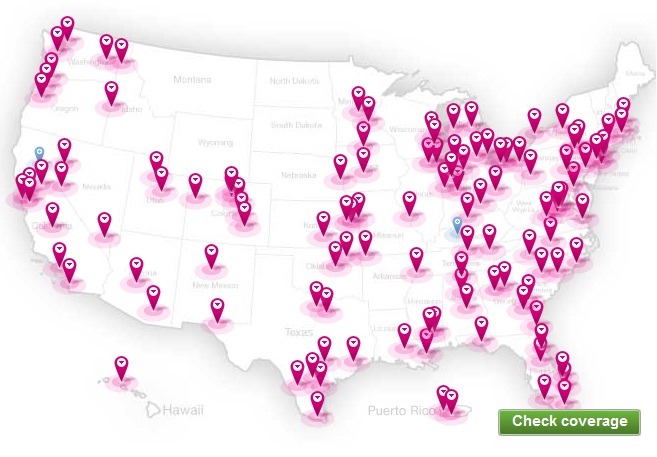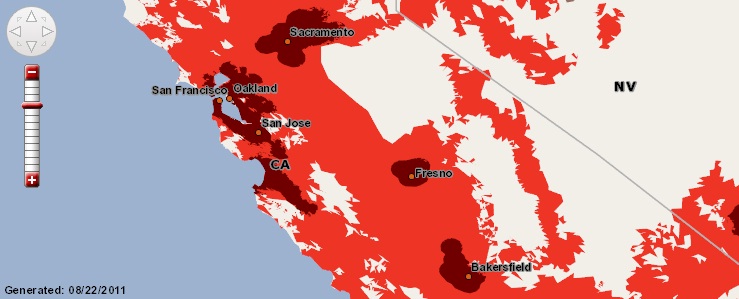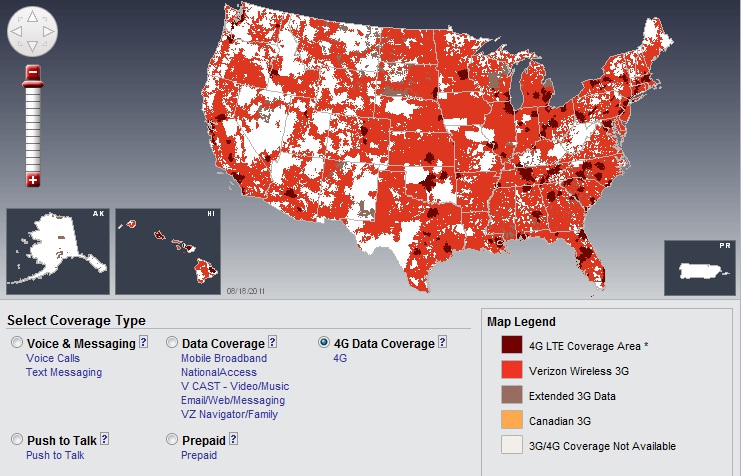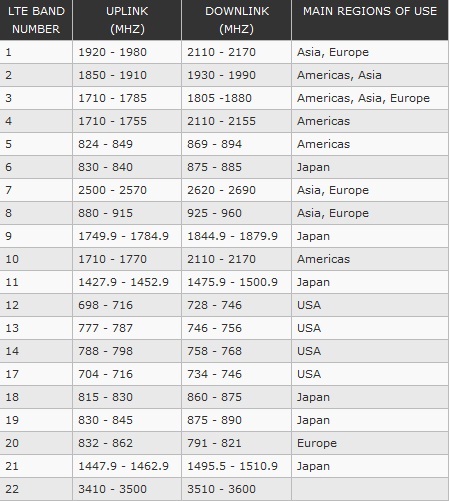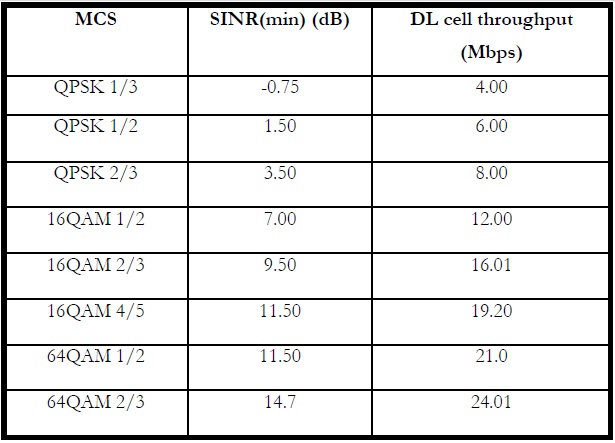T-Mobile claims to be serving 4G to 152 markets with 170 million POPs across the US. The technology that T-Mobile is using is HSPA+ which achieves data rates comparable to those achieved by 4G LTE technology being used by Verizon. With this technology (HSPA+21 and HSPA+42) end users can experience average download speeds of 5Mbps and peak download speeds of 12Mbps. However the future of T-Mobile hangs in the balance now as the AT&T and T-Mobile merger is being debated at the FCC.
Although the above figure seems to suggest that T-Mobile 4G service is available throughout US it must be noted that the service is actually available only in high density urban areas where operators make most of their revenue. This means that 4G service would not be available on most of the highways. So the 4G service must at this point compete with not only other wireless services but also with DSL and Cable.
Just to get an idea of the coverage we look at the list of cities getting 4G service in California (as claimed by T-Mobile). The list includes: Anaheim, Burbank, Fresno, Glendale, Irvine, Los Angeles, Long Beach, Merced, Modesto, Monterey, Napa, Oakland, Ontario, Palm Springs, Sacramento, San Diego, San Francisco, San Jose, Santa Rosa-Petaluma, Salinas, Stockton, Vallejo-Fairfield, Visalia.
It seems that the T-Mobile 4G service in California is much more widely spread than Verizon LTE (see previous post) with many smaller cities such as Stockton, Modesto, Santa Rosa and Visalia also getting 4G service.
POP: Point of Presence.
